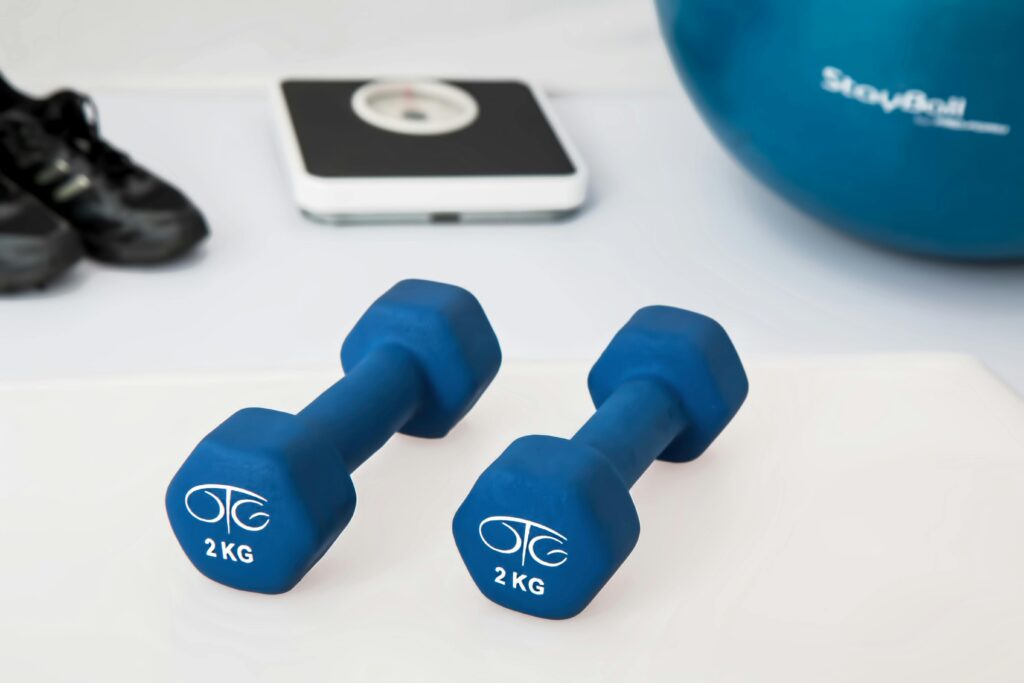As an Amazon Associate I earn from qualifying purchases.
How to Stay Motivated with Exercise
Maintaining consistent motivation to exercise can be a challenge, especially when life becomes overwhelming. However, with a structured approach and science-backed strategies, staying committed to your fitness journey is not only possible but enjoyable. In this guide, we break down the best ways to build lasting motivation, avoid burnout, and create a routine that sticks.

Set Clear, Achievable Fitness Goals
To stay motivated long-term, we must begin by setting SMART goals—Specific, Measurable, Achievable, Relevant, and Time-bound. Vague goals like “get fit” lead to inconsistent results, whereas a goal like “walk 30 minutes a day for 5 days a week” creates accountability.
Why This Works
Clear goals create a mental roadmap. Each completed milestone builds confidence and reinforces progress.

Create a Consistent Workout Schedule
Consistency beats intensity when it comes to long-term results. By planning workouts into our daily or weekly calendars, we turn exercise into a habit, not a chore.
Tips for Building a Routine:
Choose a time of day that fits your energy levels
Treat workouts as non-negotiable appointments
Use calendar reminders or apps to track sessions
This removes decision fatigue and makes it easier to stay committed over time.

Find Physical Activities You Actually Enjoy
If we dread our workouts, our motivation will eventually fade. The key is to experiment until we find physical activities that feel fun, energizing, and sustainable.
Enjoyable Exercise Ideas:
Dance workouts or Zumba
Hiking or trail walking
Swimming or aqua aerobics
Group classes like kickboxing or Pilates
Strength training circuits with music
Doing what we love makes it far more likely we’ll show up even on low-energy days.
Track Your Progress Visually
Seeing improvement is one of the most powerful motivators. We recommend using fitness journals, tracking apps, or even before-and-after photos to monitor changes over time.
Metrics to Track:
Number of workouts per week
Duration or intensity level
Strength or endurance increases
Energy levels and sleep quality
Mood improvements
Progress tracking provides instant feedback that reinforces effort and consistency
Use Positive Reinforcement and Rewards
To maintain momentum, reward yourself for milestones. This activates the brain’s dopamine reward system, encouraging repeat behavior.
Healthy Reward Ideas:
Buy new workout gear after a month of consistency
Treat yourself to a massage or spa day
Plan a healthy brunch after a long hike
Create a “motivation jar” with notes of encouragement
Positive reinforcement helps us build a deep emotional connection with the habit of exercising
Mix Up Your Routine Regularly
Stagnation leads to burnout. To stay engaged, we must keep workouts fresh by introducing variety every few weeks.
How to Keep Things Interesting:
Alternate between cardio, strength, and flexibility
Try new fitness challenges (e.g., 30-day core challenge)
Use YouTube or apps like FitOn and Nike Training Club
Change environments: gym, home, park, or beach
This combats boredom and engages different muscle groups, improving overall fitness.
Surround Yourself with Accountability and Support
Accountability is one of the most underrated tools for sticking to an exercise routine. When we commit publicly or with a partner, we are more likely to follow through.
Ways to Stay Accountable:
Join a workout group or fitness class
Hire a personal trainer or coach
Share your fitness journey on social media
Use a buddy system to check in regularly
Sign up for events (e.g., 5Ks or fitness challenges)
Support systems create shared responsibility and encouragement when motivation dips.
Align Fitness with a Greater Purpose
Exercise should feel like more than a task. When we connect fitness to our larger life values—such as longevity, confidence, or mental health—it becomes more meaningful.
Examples of Higher Purpose:
“I want to be active with my children.”
“I want to lower my stress and anxiety.”
“I want to prevent future health issues.”
Purpose fuels persistence, especially on days when discipline is all we have left.
Fuel Your Body to Support Energy and Consistency
No motivation strategy works if we’re running on empty. A body fueled with nutrient-dense food, hydration, and rest will naturally seek movement and perform better.
Foundations of Exercise Nutrition:
Prioritize lean protein, complex carbs, and healthy fats
Stay hydrated throughout the day
Time meals to support workout energy (e.g., banana and peanut butter 30 minutes before)
Avoid extreme dieting that drains energy or causes irritability
Food is fuel, not the enemy. When our bodies feel good, our minds follow.
Track Non-Scale Victories
While weight loss or muscle gain are common goals, focusing only on numbers can sabotage our motivation. It’s vital to celebrate non-scale victories (NSVs) such as:
Increased energy or confidence
Better sleep or mood
Feeling stronger or more mobile
Improved digestion or posture
When we notice how exercise improves our daily life, we find deeper reasons to keep going.
Eliminate the “All or Nothing” Mindset
Missing a workout doesn’t mean failure. Life is unpredictable, and flexibility is essential for long-term success.
Mindset Shifts to Embrace:
“Something is better than nothing”
“Progress, not perfection”
“One rest day doesn’t undo months of effort”
By removing guilt and shame from the equation, we cultivate a positive relationship with exercise.
Create an Inspiring Workout Environment
Your surroundings can significantly influence motivation. Curate a space that encourages movement and makes you excited to show up.
Ideas to Energize Your Space:
Add motivational quotes or posters
Use upbeat playlists that match your workout style
Invest in quality equipment that feels rewarding to use
Keep your workout clothes clean and easily accessible
A supportive environment removes friction and elevates your mindset.
Use Visualization and Affirmations
Mental techniques like visualization and positive affirmations are powerful tools for staying motivated. By picturing ourselves succeeding and speaking positively, we create alignment between body and mind.
Examples:
“I am becoming stronger every day.”
“I choose to move my body with love.”
“Working out is a gift, not a punishment.”
Reinforcing these beliefs rewires the brain for consistency and enthusiasm.
Conclusion
Staying motivated with exercise isn’t about willpower alone—it’s about building a sustainable lifestyle around movement, mindset, and meaning. By applying these proven strategies, we create a system that supports our health goals without relying on fleeting bursts of motivation.
Amazon and the Amazon logo are trademarks of Amazon.com, Inc or it's affiliates.
Related Posts
- Top 10 Exercises for Weight Loss
Top 10 Exercises for Weight Loss Finding effective weight loss exercises can transform your fitness…
- Top 5 Weight Loss Myths, Debunked
Top 5 Weight Loss Myths , Debunked Weight loss is a topic that is often…
- Top Best Fruits for Weight Loss
Top Best Fruits for Weight Loss Starting a journey to lose weight naturally can be…
- Drink Coffee for Weight Loss
Drink Coffee for Weight Loss The Comprehensive Guide to CGA and Fat Burning Introduction to…
- The 80/20 Diet for Weight Loss
The 80/20 Diet For Weight Loss Introduction: Embarking on a journey towards a healthier lifestyle…







